November 4, 2015 | Posted in JAZZ | By Jason Sositko
More modern jazz albums you need:
I love instrumental modern jazz, Miles Davis, Charles Mingus, John Coltrane, Duke Ellington and any number of artists.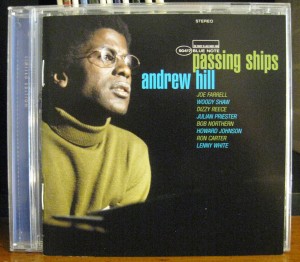
If you have only a passing interest in jazz, or are just getting into the music, I doubt you will know much about the music I will cover below.
The new listener can start with this list first, then come back here for more great jazz.
“Modern jazz being the ultimate niche music, it lends its self to a wide range of sub-genres, this music can fall through the cracks of a person’s regular listening rotation.”
Many artists like Andrew Hill or Sam Rivers are not well-known outside of the modern jazz realm, hopefully I can point you in the direction of some of these more obscure artists, and you can discover this wonderful music like I did.
I will focus on those albums that not only are obscure outside of jazz, but also aren’t always well-known to insiders. I have been into jazz since the mid-90’s, and I still discover new music frequently.
Andrew Hill: Point of Departure (1964)
Within jazz, Point of Departure is certainly a known and respected album, those just finding their way into the post bop jazz of the 60’s will certainly need this album.
With Eric Dolphy, Tony Williams, and Andrew Hill, you know this is going to be good.
I have always considered this a companion album of Dolphy’s Out To Lunch, all be it without the vibes of Bobby Hutcherson. Joe Henderson is on this set as well, he sure showed up a lot on the mid 60’s classic dates?
Oddly enough, Kenny Dorham plays trumpet on this. I have read that Dorham didn’t particularly like Dolphy’s sound, and let it be known, you wouldn’t know it here.
Tony Williams’ drumming is of special note on Point of Departure, mature beyond his teenaged years. I still marvel at the skill he had at such a tender age.
Cannonball Adderley: Mercy Mercy Mercy
Cannonball Adderley’s Mercy Mercy Mercy! was his biggest selling album, and contained the biggest chart hit of his career with the title track: Joe Zawinul’s “Mercy Mercy Mercy”, went all the way to #11. Mercy Mercy Mercy” is probably my least favorite tune on the album too ironically.

Not recorded in a real night club:
The album was not actually recorded live at “The Club” as the jacket exclaims, that was just a stunt to give some publicity to a new night club of a friend of Cannonball’s.
The Club was actually a studio date in front of an invited audience at Capitol’s Los Angeles studios. Producer David Axelrod set the mood of the recording with a calculated risk, he passed out as many free drinks as the crowd wanted, and of course the crowd responds in the usual fashion, they DO scream and go nuts at times.
I think it really pushed the band to heights maybe not attainable in a studio setting as well. Axelrod gambled and won big on this recording. The music is essentially high quality hard bop with soul jazz undertones, but the music is very hot at times. If your toes don’t tap on this music you might be a lost cause, the atmosphere really draws you in, and it takes you along for the ride.
Nat Adderley’s “Fun” and “Games” are fantastic soul jazz workouts that lead the album off, Nat plays some mean trumpet on this date as well, the album definitely put him on my radar. Cannonball’s “Hippodelphia” is a little more complex, and his “Sack O’ Woe” is 10 minutes in length, that brings the album to a close. At the end of it all the crowd is so fired up, that they probably had to keep them locked in the studio to let em dry out a bit?
Duke Pearson: Introducing Duke Pearson’s Big Band
Duke Pearson is one of the most underrated of all the pianists of Blue Note records. Influenced by Horace Silver and Bud Powell to a lesser degree, Duke’s Genius lies within his arranging abilities.
Introducing Duke Pearson’s Big Band is Proof of that Duke had a knack for subtle reworkings of standards, “Taste of Honey” is a perfect example, with a tasty flute solo, and a surprise ending.
The album kicks off with “Ground Hog” a playful funky number that has a contemporary feel, followed by “New Girl” with its classic swinging theme; with a nice modal groove to solo off of.
Reminds me a bit of a Miles Davis style tune “Milestones”. I can’t say enough about the album, and Pearson in general, I love the use of the flute in many of his albums, “Bedouin” and “Taste of Honey” get the treatment here.
Other albums I highly recommend are, Sweet Honey Bee, Wahoo, and The Right Touch, all of Pearson’s Blue Notes are as good as anything put out on the label in the mid 60’s.
You can also check Duke’s Piano playing out on other sessions like Grant Green’s Idle Moments, Johnny Coles’ Little Johnny C, and Bobby Hutcherson’s The Kicker.
Duke was basically the house arranger for Blue Note throughout the 60’s after the death of Ike Quebec. Duke is a big part of the Blue Note legacy, Introducing Duke Pearson’s Big Band is a nice place to start that investigation.
Mosaic Select #17: Johnny Richards
This 3 CD set from Mosaic Records was a real revelation, some of the best progressive jazz of the mid 50’s is collected on this set, Rites Of Diablo and Wide Range to name 2.
This music borders on the exotica style that Les Baxter made popular, but with a modern Big band drive, some of the music is augmented with a chorus on Rites of Diablo, a very sinister sound indeed.
Johnny Richards was brought into the jazz word via Stan Kenton his classic authentically Cuban Cuban Fire, and his own releases were every bit as good, if not better than what he did with Kenton.
Stan Kenton: Plays Chicago
A fantastic album tribute to the brass rock band Chicago. Kenton, one of the greatest band leaders in the history of jazz, and a real innovator, bringing big band swing into the progressive jazz fold, with plenty of progressive arrangements.
Plays Chicago is a little different, with all the songs recognizable, but re worked the Kenton way.
I was surprised how much I enjoyed this album, I also do like the early 70’s Chicago music, so this was a real treat. Also the track “Inner Crisis” from Blood Sweat and Tears gets a tribute, and it might be the best track on the album.
Art Pepper: Winter Moon and other Quartet Jazz
Art Pepper continues to be one of the most underrated jazz musicians of all time. Like Charlie Parker, his bouts with neurosis and drug addiction were legendary, perhaps Pepper’s even more so than Parker, or even Chet Baker.
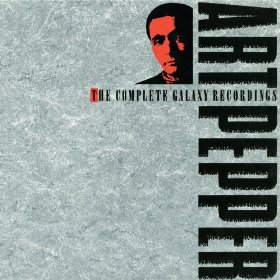 Somehow during the 5o’s Art rose to prominence as one the great alto sax players in jazz. Albums like Meet the Rhythm Section, Early Art, Smack Up, and Art Pepper + 11 prove how great he was before 1960.
Somehow during the 5o’s Art rose to prominence as one the great alto sax players in jazz. Albums like Meet the Rhythm Section, Early Art, Smack Up, and Art Pepper + 11 prove how great he was before 1960.
Unfortunately Art’s heroin addiction and overall needy personality lead to a lost decade and half of recorded music.
Except for a Stint with Buddy Rich on the fantastic Mercy Mercy Mercy album from 1968, Art only did a few sporadic quartet sessions, and some work with vocalist Frankie Randall the entire decade of the 1960’s.
Only when Art made it to Synanon during the late 60’s was he able to kick, and live a somewhat normal life. It wasn’t until 1975 did Art finally make it back into the studio for one of his own sessions as a leader, a drought of nearly 10 years…
Somehow Art summoned the courage to be what he was destined to be, “a jazz musician” the last 7 years of his life, not a junky.
I think because jazz was so homogenized by the mid 70’s, with fusion being both critically accepted, some of it anyway, and commercially viable, Art was overlooked.
I think Art’s come back was well-known in the Jazz community, somehow today though, Art gets lost in the shuffle, even with the well received books and documentaries where Art strips his soul bare.
Ironically when art made his comeback, Miles Davis was battling his own demons and would not return in earnest until 1981, so Art didn’t even have that competition. Still the 70’s and early 80’s music from Art seems forgotten by the jazz establishment.
I have been into jazz for over 20 years now, and though I had a few of the ringers in Art’s discography, I had not heard any of this music until recently, accept for the Village Vanguard recordings. All of this music post 1975 has been astounding to listen to.
I was fortunate to find the huge complete Galaxy Box at a second-hand music store. I noticed 80 bucks on it used, a tidy sum for me, the box was beat up, and a former owner’s name written on it red marker. I had noticed it sitting in that shop for months, one day I asked the shop owner if he would take $50 for it, he nearly fell down reaching for the 50. I spent the better part of 3 days digesting the music.
I read first the Gary Giddin’s penned liner notes, which are very good as you might expect. He gives some back ground info into Art’s state of mind during this period via quotes from Art and his widow Laurie Pepper, via her book Straight Life. I of course had to buy that book as well, and oh what a brutally honest book that is!
Knowing that art was not in the best health during these sessions makes it all the more miraculous that the music is this damn good. The Galaxy Box is mostly quartet music, studio and live, but all high-octane Art.
The one album to my ears that stands out from all the rest on the Galaxy box is, Winter Moon. A strings album from 1980, that was arranged in part by the great former Stan Kenton arranger Bill Hollman. This music should be better known to jazz aficionados.
I am not typically big on strings or ballads albums, they tend to be over-produced and too low-key for me. I like ballads as a rest stop on a wild bebop ride for the most part. Winter Moon’s strings are sublime, very well done and never schmaltzy.
Art is sensitive and strong throughout, very inventive. Hauntingly beautiful is the best way to say it. Some things do kick into medium tempo now and then to add dramatic effect, a must own album.
Anything in the Art Pepper catalog is well worth having, these from the comeback, Winter Moon, Live at the Village Vanguard, Live at the Maiden Voyage, and the 4 track Laserlight compilation Laurie’s Choice Are fantastic.
Andrew Hill: Dance With Death
Dance with Death recorded in 1968, but not released until 1980. Hill’s work here might be the best he ever recorded. Including Point of Departure. Dance With Death is a Post Bop album featuring some of the best compositions hill ever penned. “Yellow Violet” is ring tone worthy that opening theme, and “Fish n’ Rice has a very ominous vibe, the entire album has this vibe I throughout, hence the reason for the title of the album.
Dance With Death features Charles Tolliver on Trumpet, and Joe Farrell On Tenor. The album very much has a classic Swingin’ Blue Note sound, but easily falls into the style that Miles Davis and his great mid 60’s quintet was putting out at the time.
The title track, “Fish n’ Rice” and “Yellow Violet” are the highlights, all three deserve to be jazz standards.
Johnny Coles: Little Johnny C.
Little Johnny C. from 1963, could have easily been a Duke Pearson date. Duke penned five of the six compositions here. I personally have always loved this session, with a young Joe Henderson on tenor, and in fine form he is. You need this in your collection.
Johnny Coles has an unusual brittle tone, that compliments Henderson perfectly. The title cut, and the lone ballad “So Sweet my little Girl ” are the big winners here.
On the latter, I recognize a tenor tone very similar to the great Joe Lovano, joe had to have listened to this tune, for his own ballad playing sound is a lot like Henderson’s here.
Mike Westbrook: Metropolis
I was turned on to this album from 1971 in an All About Jazz chat room. Certainly influenced by Bitches Brew from Miles Davis. But not a knock off, though a few bass grooves will having you nodding to Miles.
Metropolis combines free jazz, and jazz rock, as well as some slicker funky sounds. Some parts of the album are all out free for all free jazz blow outs.
Plenty of melody shows up within Metropolis, with that mysterious Bitches Brew Sound; you will not confuse the two records at all. Metropolis is an earthy and busy music, like Bitches Brew but as stated, plenty of softer moody interludes, words really can’t describe it, you will like it if you’re open eared.
Here is a nice beginner’s guide to avant-garde and free jazz, if you want to take your jazz listening to another stratosphere, just remember: Open ears are required, and it will be an acquired taste.
Other Underrated Jazz Artists I discovered
My first exposure to Tyrone Washington was his Blue Note album Natural essence, I paid 10 bucks for it. I was blown away that I had not heard of him, down the road I realized he did play as a side man on Horace Silver’s The Jody Grind, and Larry Young’s Contrasts, Both fine albums in their own right.
Another example was the underrated trumpeter Chuck Mangione: His album Feels So Good with that cheesy cover, turned out to be much more enjoyable than I thought as I have worked back into his discography.
I have learned over the years that jazz critics, particularly the protectors of all that is holy, the neo con types; they can lead you astray because they have an unhealthy bias against any music that dares to have jazz influences, or adds any other elements that don’t fit into their narrow box.
He certainly hasn’t received his due critically, some of his albums after Feels So Good I suppose left a bad taste in those critics mouths, for much of it is bland and too smooth for my tastes. Some of his other albums, like his live albums and Children of Sanchez are all stellar.
Feels So Good has many extended pieces with plenty of real jazz improvisation. Mangione has a wonderful melancholy tone on flugelhorn too, you need that album.
John Coltrane: Interstellar Space
Interstellar Space is a John Coltrane album recorded in February of 1967 at Rudy Van Gelder’s Studio, and not released until 1974 on Impulse Records. The session was recorded one week after the session that produced the album Stellar Regions.
Interstellar Space and Stellar Regions could be considered sister albums when you hear them back to back, with many of the themes very similar. Unlike Stellar Regions however, Interstellar Space is a duet between Coltrane and underrated drummer Rashied Ali.
To my ears, Interstellar Space is one of the most startling examples of free improvisation in jazz history. The music is so intense, that one forgets that only two people are playing the music. The music is so powerful, with Ali’s drumming so spectacular, it literally sounds like two drummers.
Coltrane introduces each song with some shaking bells, “I like this touch”, then he only briefly states a melody and it’s off to the races. Coltrane’s technique is awesome here, some would say it isn’t even really a technique!
I almost feel as if I am listening to another newly invented instrument, one that’s not been heard before or since….and honestly Ali’s drumming is so damn good and every bit the equal of Coltrane, the music is not to be missed by open-minded drummers of any genre.
I don’t know how Coltrane does it, he never seems to be at a loss for an idea, sounds are coming out of his horn that seem impossible. Every last note is squeezed out of the sax on Interstellar Space, he is playing as if his life depends on it.
There always seems to be logic to the music, the tracks are cleverly named after the planets: “Saturn”, “Mars”, “Venus”, “Jupiter”, and “Mars”, and the Constellation Leo gets a tribute as a bonus track on the Compact Disc pictured above respectively.
Anyone not used to the avant-garde and gets put off by atonal sounds, forget Interstellar Space… but those with an open mind, the album is a free jazz masterpiece.
All photos used with permission via Amazon.com.
Don’t forget to Follow me on Twitter to get other useful articles about modern jazz.
I also have another article with many reviews of must hear jazz albums created since the year 2000. There is indeed plenty of great jazz being produced in recent times.
Related posts at Spacial Anomaly
Table of Contents
- Andrew Hill: Point of Departure (1964)
- Cannonball Adderley: Mercy Mercy Mercy
- Duke Pearson: Introducing Duke Pearson’s Big Band
- Mosaic Select #17: Johnny Richards
- Stan Kenton: Plays Chicago
- Art Pepper: Winter Moon and other Quartet Jazz
- Andrew Hill: Dance With Death
- Johnny Coles: Little Johnny C.
- Mike Westbrook: Metropolis
- Other Underrated Jazz Artists I discovered
- John Coltrane: Interstellar Space
Jason Sositko
Jason Sositko, a freelance writer and entrepreneur is a participant in the Amazon Services LLC Associates Program, an affiliate advertising program designed to provide a means for sites to earn advertising fees by advertising and linking to Amazon.com. I also use services such as Viglink and Skimlinks to earn income via links placed inside articles.
2 Comments
Leave a Reply
*










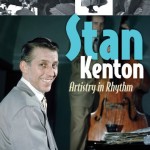
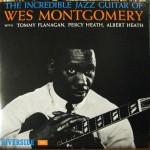
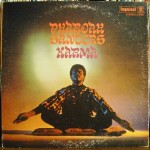
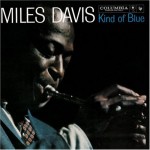








Jim Moore
June 3, 2016
Great resource for Jazz fans.
Is there a way to subscibe to this blog?
Thanks
JIM
Jason Sositko
June 3, 2016
Thanks for the kind words, I appreciate them. You can subscribe via the opt in form on the bottom left side of the footer. But another way you can follow my specific articles is via my Twitter account, Modern Jazz Daily. You can also get to my work via my about me page.